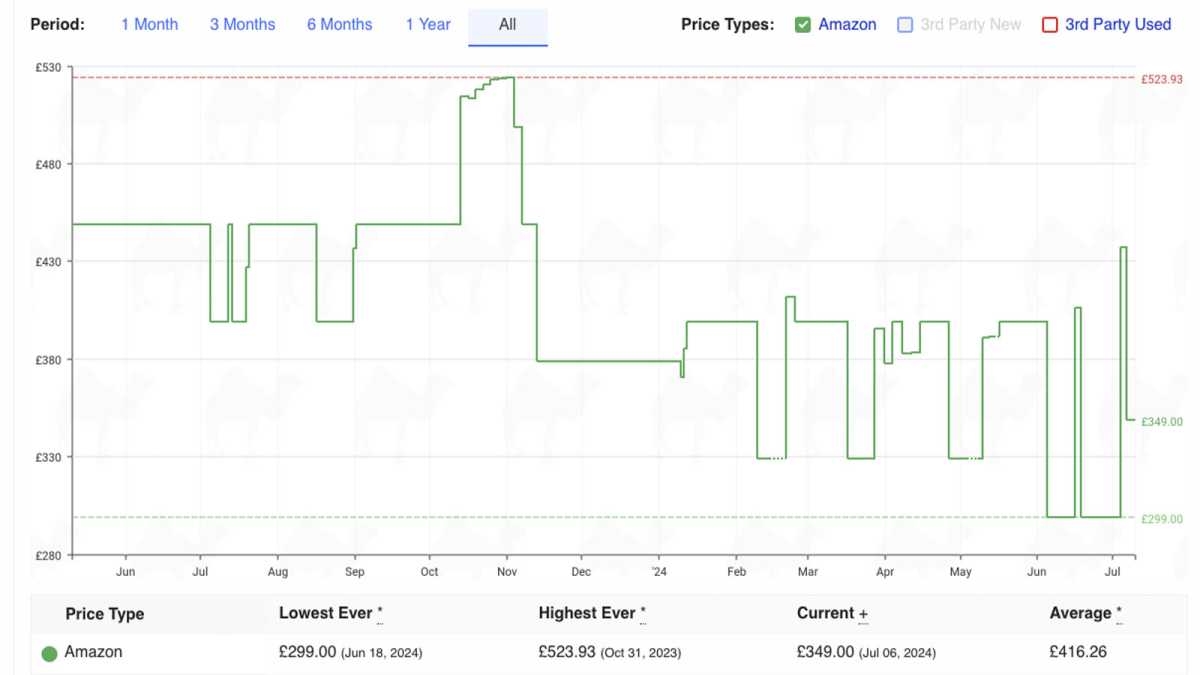Amazon’s next Prime Day arrives on 16 July 2024 and will run for 48 hours until the end of 17 July.
Prime Day offers thousands of exclusive discounts site-wide for up to two days to Prime members. The service costs £8.99/US$14.99 per month (or £95/$139 for the year) but you may be able to try Prime free.
To see all the best deals and read our buying advice, have a look at our dedicated Prime Day hub.
Over the years, Prime Day has made a reputation for itself for offering the best discounts on a wide variety of products, including all the tech we love such as smartphones, laptops, smartwatches, audio, gaming consoles, and more. But it’s also generated a little bit of scepticism, with people wondering if the deals are as good as they appear. So, is it truly worth the hype?
We’re answering the important questions ahead of Prime Day 2024, plus pointing out a few things to keep in mind if you’re wondering whether Prime Day is worth it.
Will Prime Day 2024 be worth it? Will you actually save money?
Prime Day offers discounts on hundreds of thousands of products. Will all of them appeal to you? Definitely not.
But there are genuinely good deals to be had, if you know where to look.
Sometimes Amazon’s Prime Day discounts may only be marginally deeper than the prices before the sale, which is why you need to do a bit of research to ensure you get the best deals available. We’ll show you how below.
Is Amazon the best place for discounts?
Amazon may once have been the go-to destination for the lowest price – the company was famously unprofitable for decades by choice, by focusing on long-term growth over short-term profit. The strategy helped the brand cement itself in the public consciousness as the obvious place for the lowest price. But that may no longer be the case.
While we expect all sorts of discounts on Prime Day, other retailers will also be competing for customer attention: the battle is on. What we’d suggest is that, if you spot a product on sale on Amazon, you check other sites before you buy.
In the past couple of years, Currys has price-matched Amazon on more occasions than we can count. Currys often does promotions with free next-day delivery (usually with code FREENEXTDAYDELIVERY), which effectively gets you Amazon Prime’s main benefit, but without the additional cost of a membership.
A Prime membership gets you lots of other benefits year-round, such as Prime Video, Prime Music, Prime Reading – but if free delivery is your main deciding factor for shopping from Amazon, be sure to consult other options as well.
But if you’re looking for Ring, Echo or Kindle devices – which are, after all, Amazon products – the Prime Day sale is the best place to find them. The discounts on tech from these brands, especially on bundles, can be huge. You’ll need to have a Prime membership and be prepared to move quickly when you spot a really great deal: they sell out fast.
And, while Amazon offers competitive pricing all year round on other popular tech brands, especially on Fitbit, we’ve seen other retailers better Amazon’s prices of late. AO and KRCS have both outdone Amazon on iPad deals in the past.
How can you find out if the Prime Day discount is real?
Tracking, tracking, and more tracking.
Amazon is notorious for shifting prices around. This is no different on Prime Day, when stocks can run out or models on sale change frequently. A price you see on a popular device in the morning might be entirely different by the afternoon.
You might also see a price go up immediately before Prime Day, to make the sale discount appear more dramatic than it is. In other words, you’d still be getting a discount, but it may not be as impressive as it appears.
That’s why it’s useful to know the average prices and the usual discounts that appear throughout the year. Because, while you can expect a great breadth of deals on Prime Day, to know whether you’re getting the best price will require a bit of leg work.
Thankfully, there are tools to help. CamelCamelCamel, for example, lets you look up pricing history on any Amazon product simply by plugging in the URL. The site shows you the current, highest, and lowest price on a vast database of products. Make a note of these so you know what the price is to beat when Prime Day begins.
For example, the Google Pixel 7a (one of our current highest-rated smartphones) is currently priced at £349 on Amazon. But CamelCamelCamel shows that its Amazon price regularly drops to £330, and that it’s recently been as low as £299. So, £299 is the price to beat if you’re hoping to snap one up in a Prime Day deal.

Camelcamelcamel
The Keepa browser plugin is another useful tool that lets you see price history directly on the product page on Amazon. You can see it in action in the image below for pricing history on the Oral-B iO9 electric toothbrush. You can also use it to sign up for alerts when a product drops below a certain price.
How can you keep track of all the deals?
Now is a good time to sign up to relevant newsletters, which will likely get advance notice of major discounts and send out emails when they drop.
You can also bookmark this page for a quick way to access the best Prime Day deals. We’re constantly tracking the best prices and offers in our year-round deals coverage.














